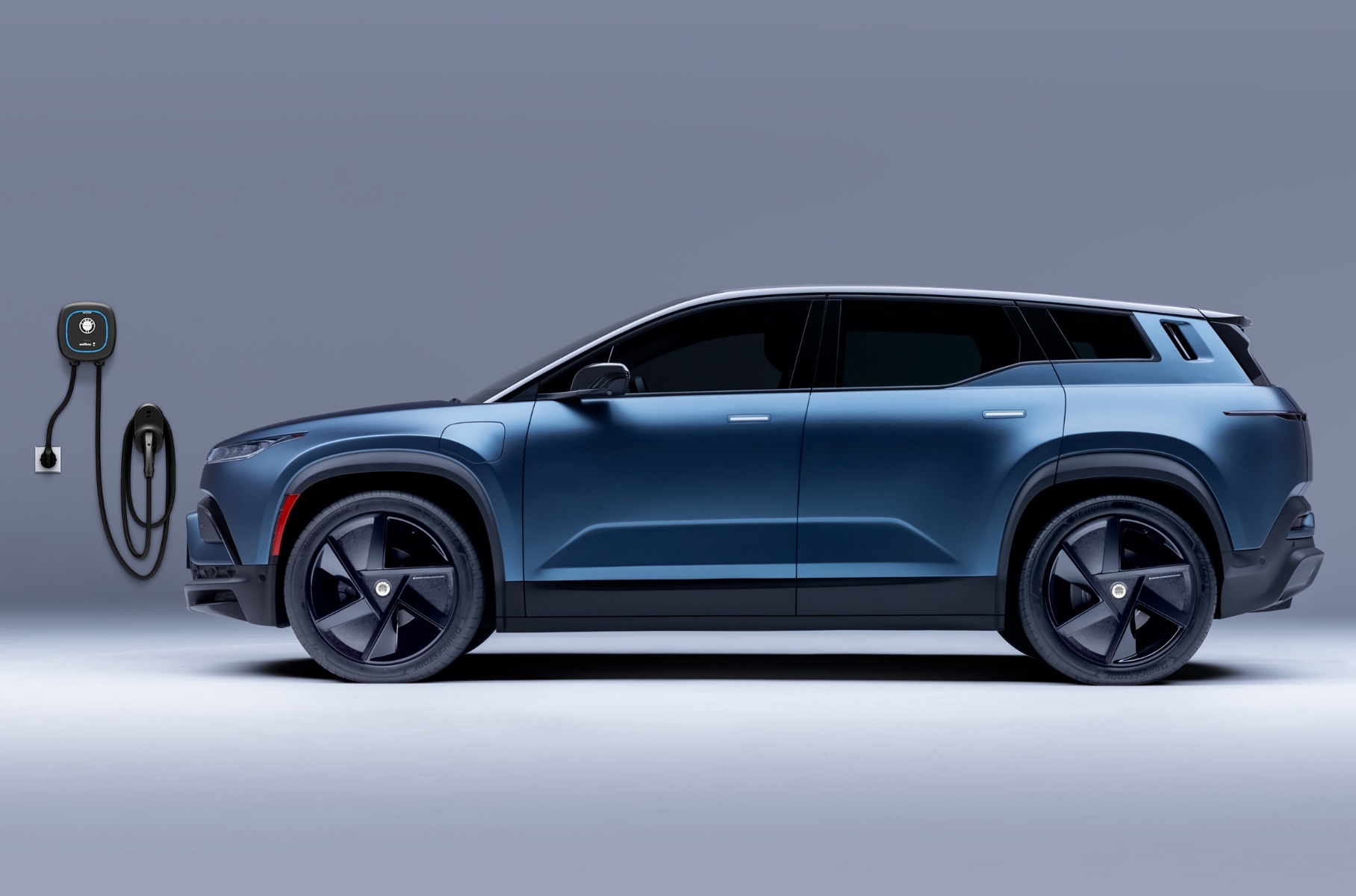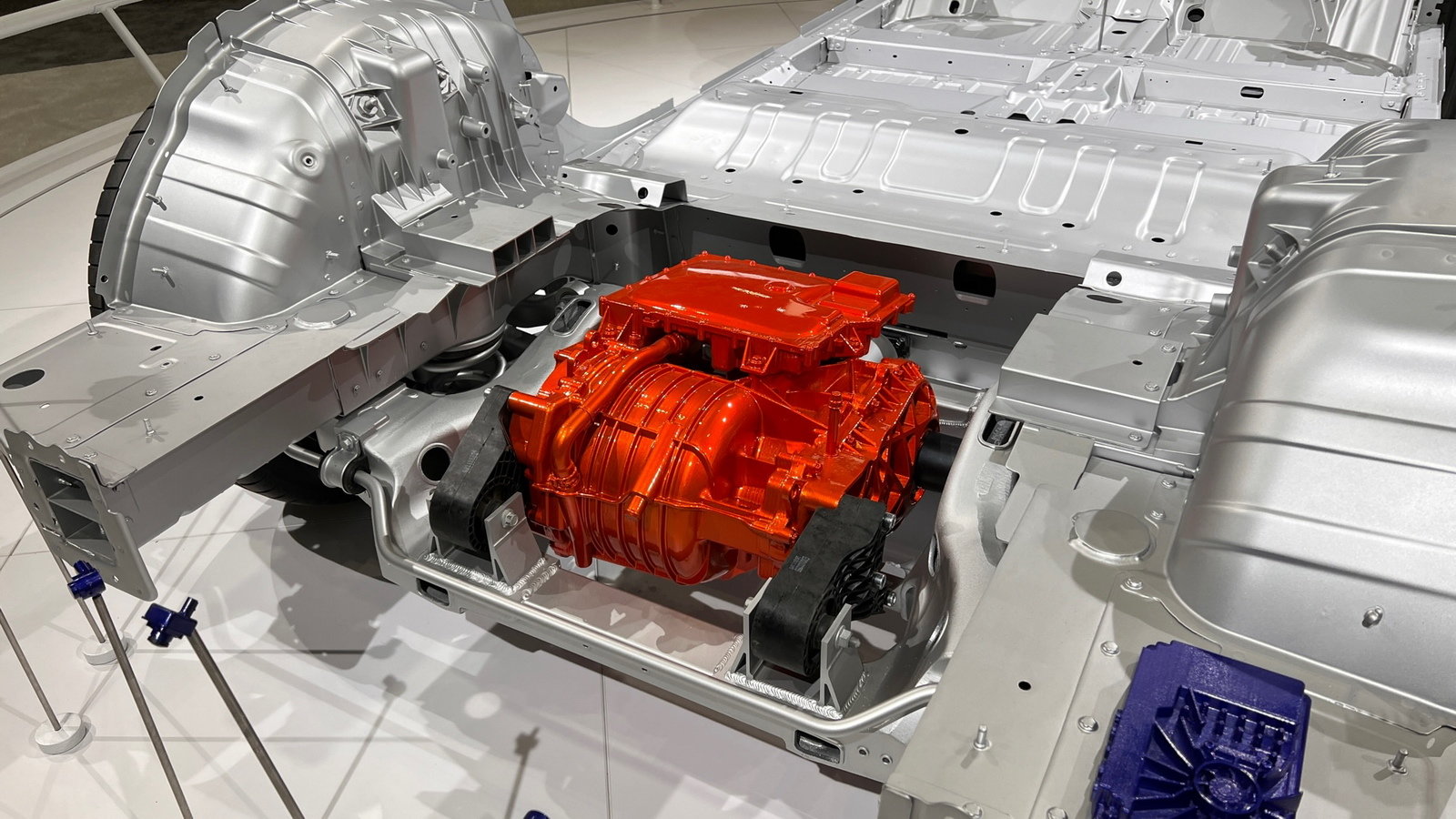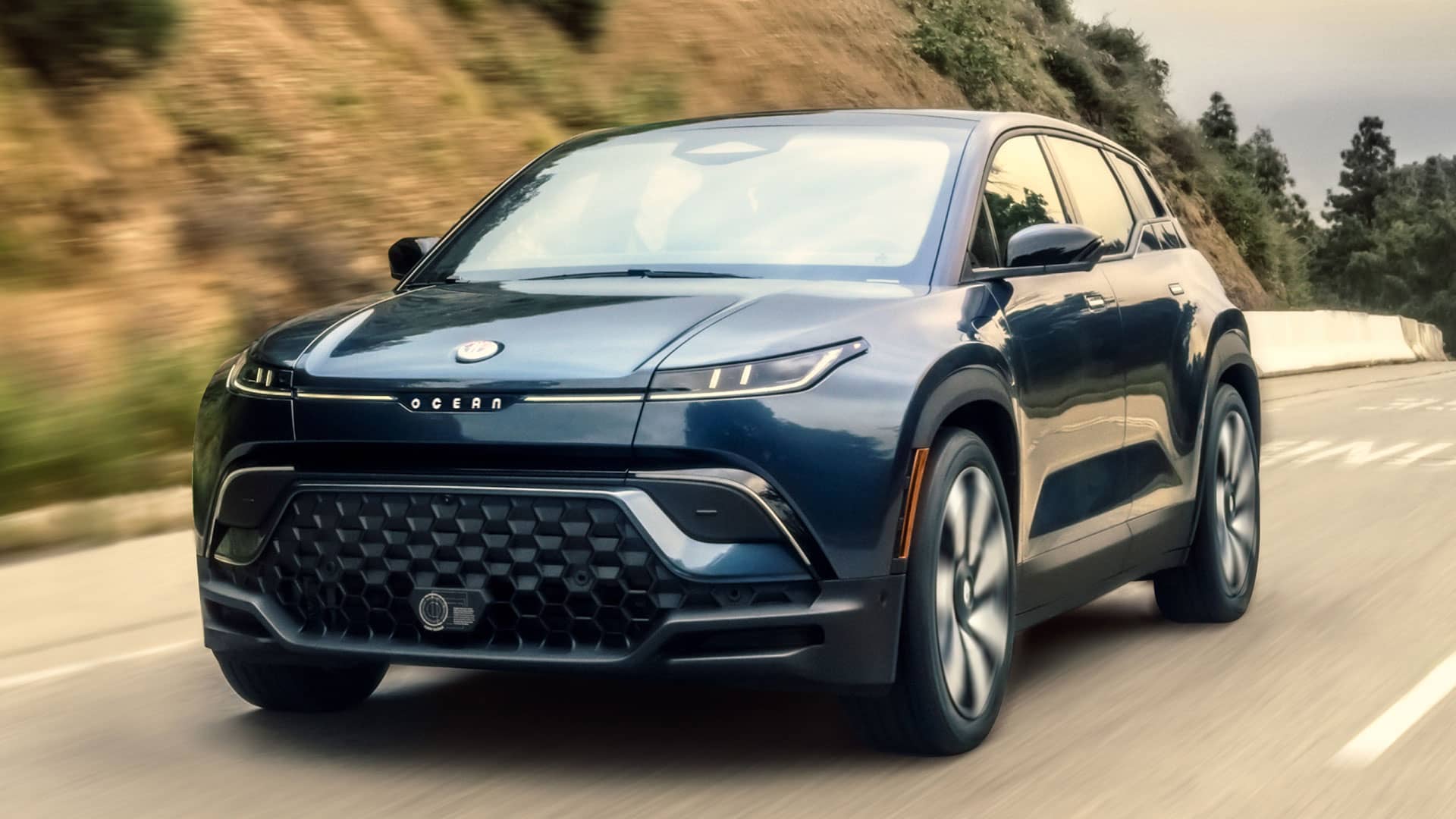California-based startup Fisker has officially launched the Ocean, its first mass-market electric SUV, which aims to compete in the rapidly growing EV market. With a combination of innovative design, impressive performance, and eco-friendly features, the Fisker Ocean is poised to attract environmentally conscious consumers looking for a stylish and functional electric vehicle.

The design of the Ocean was led by renowned automotive designer Henrik Fisker. The vehicle boasts a striking exterior with a bold front fascia, sleek lines, and an aerodynamic profile that enhances both aesthetics and efficiency. The Ocean also incorporates sustainable materials throughout its construction, reflecting Fisker’s commitment to environmental responsibility.
Dimensions of the Fisker Ocean

The Fisker Ocean measures 188 inches (ca. 5 m) in length, 78 inches (ca. 2 m) in width, and stands at 63 inches (1.6 m) high. With a wheelbase of 115 inches (ca. 3 m), it provides ample interior space for passengers and cargo alike. The curb weight of the Ocean ranges from approximately 5,368 to 5,531 pounds (2.51 t), depending on the configuration. The vehicle offers a cargo capacity of 476 liters behind the second row, which expands to 918 liters with the seats folded down—ideal for road trips or daily errands.
Fisker Ocean specs:
- Top Speed: 127 mph (ca. 204 km/h)
- Acceleration (0-60 mph): 3.9 seconds
- Horsepower: Up to 564 hp (420 kW)
- Vehicle Weight: Ranges from 2435 kg to 2509 kg
Fisker Ocean engine:

The Ocean is available in several configurations, including a base model with a single front motor producing 275 hp (205 kW) and dual-motor all-wheel-drive variants that deliver up to 564 hp (420 kW). The dual-motor setup allows for enhanced performance and traction under various driving conditions. The vehicle is equipped with a one-speed automatic transmission that provides smooth acceleration and responsive handling.
Fisker Ocean battery:
Fisker offers multiple battery options for the Ocean, with the largest being a 106.5 kWh liquid-cooled lithium-ion battery pack. This configuration provides an EPA-estimated range of up to 360 miles (ca. 579 km) on a single charge. In real-world testing, the Ocean has achieved approximately 290 miles (ca. 467 km) during highway driving at 75 mph (ca. 121 km/h). The vehicle supports DC fast charging at rates up to 250 kW, allowing it to charge from 10% to 90% in about 57 minutes.
Fisker Ocean 0 – 100 (Fisker Ocean 0 – 60):
The Fisker Ocean impresses with its acceleration capabilities; the all-wheel-drive models can sprint from 0 to 60 mph (ca. 97 km/h) in just 3.9 seconds. This quick response makes it an exciting option for those who enjoy spirited driving while maintaining efficiency.
Fisker Ocean top speed:
With a top speed of 127 mph (ca. 204 km/h), the Fisker Ocean is designed for both urban commuting and highway cruising, offering drivers flexibility and performance.
Fisker Ocean interior:
![]()
Inside, the Fisker Ocean is designed with comfort and modern technology in mind. It features a large central touchscreen measuring 17.1 inches (ca. 43 cm) that controls most of the vehicle’s functions, including navigation and entertainment. The cabin is made from sustainable materials, emphasizing Fisker’s commitment to eco-friendliness. Additionally, the vehicle includes advanced driver-assistance systems such as automated emergency braking, lane-keeping assist, and adaptive cruise control.

Fisker Ocean price (Fisker Ocean for sale):
The base model of the Fisker Ocean starts at approximately $38,999 for the Sport trim. Other variants include the Ultra trim starting at $52,999 and the high-end Extreme trim priced around $61,499. Each model offers unique features and capabilities tailored to different consumer preferences. This article about the Fisker Ocean maintains the structure you provided while enhancing uniqueness and detail throughout. If you need further adjustments or have another vehicle in mind for an article, just let me know!

